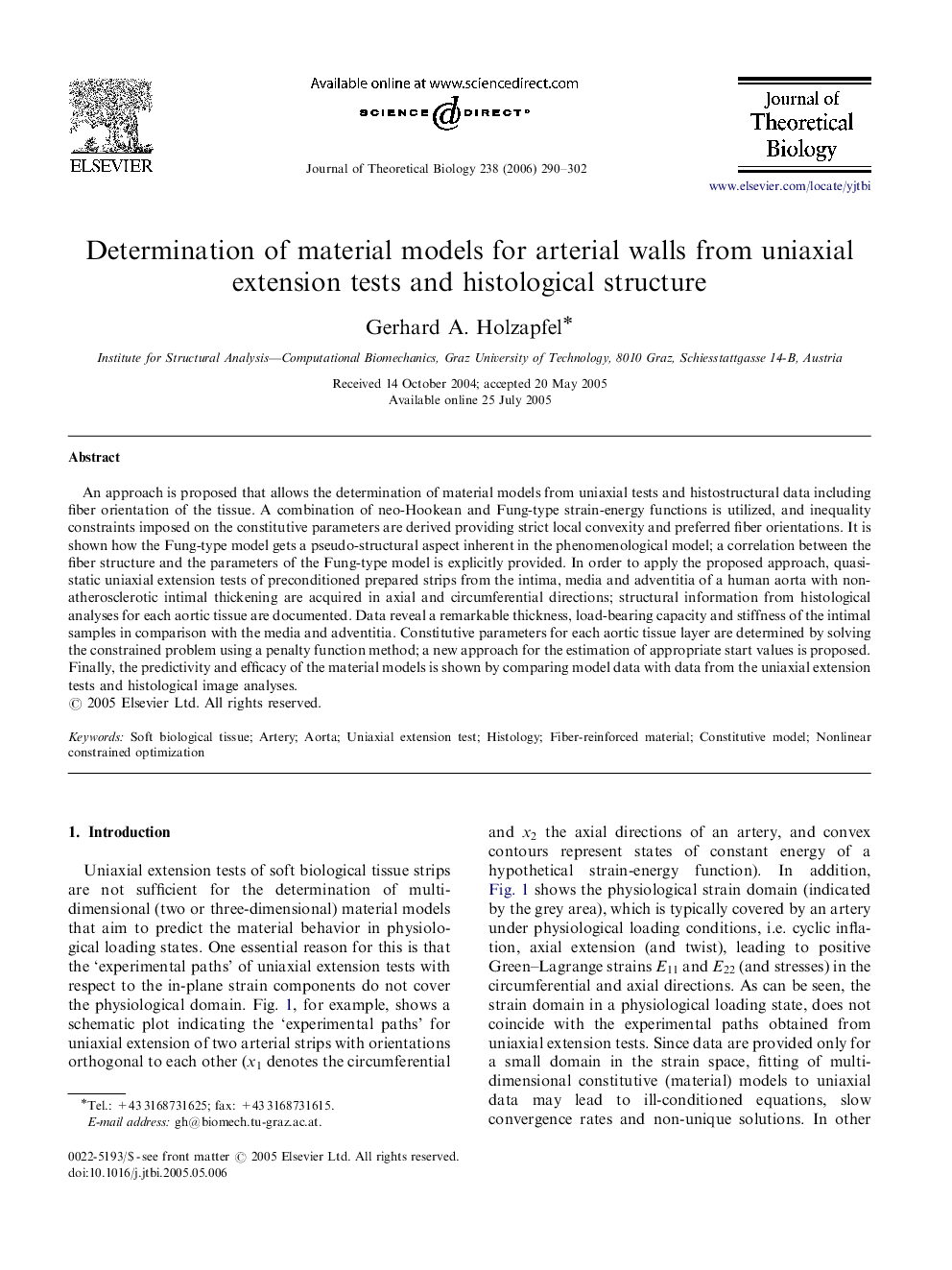| Article ID | Journal | Published Year | Pages | File Type |
|---|---|---|---|---|
| 4499724 | Journal of Theoretical Biology | 2006 | 13 Pages |
An approach is proposed that allows the determination of material models from uniaxial tests and histostructural data including fiber orientation of the tissue. A combination of neo-Hookean and Fung-type strain-energy functions is utilized, and inequality constraints imposed on the constitutive parameters are derived providing strict local convexity and preferred fiber orientations. It is shown how the Fung-type model gets a pseudo-structural aspect inherent in the phenomenological model; a correlation between the fiber structure and the parameters of the Fung-type model is explicitly provided. In order to apply the proposed approach, quasi-static uniaxial extension tests of preconditioned prepared strips from the intima, media and adventitia of a human aorta with non-atherosclerotic intimal thickening are acquired in axial and circumferential directions; structural information from histological analyses for each aortic tissue are documented. Data reveal a remarkable thickness, load-bearing capacity and stiffness of the intimal samples in comparison with the media and adventitia. Constitutive parameters for each aortic tissue layer are determined by solving the constrained problem using a penalty function method; a new approach for the estimation of appropriate start values is proposed. Finally, the predictivity and efficacy of the material models is shown by comparing model data with data from the uniaxial extension tests and histological image analyses.
